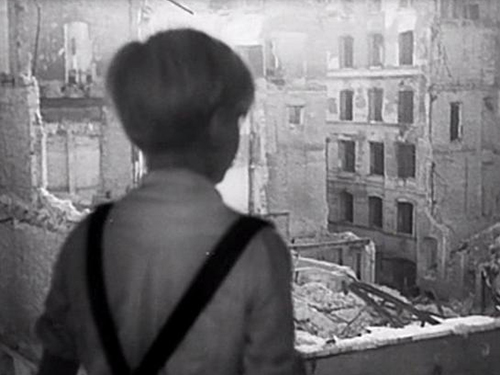
“Rossellini is de enige filmer van het Italiaanse neorealisme die zich werkelijk van dit gevaar bewust is. Hij weet dat de ‘onschuldige’ blik op de werkelijkheid een mythe is, die steeds manipulatie en mystificatie moet verbergen.
Doorbraak uit de gegeven filmcultuur is voor hem dan ook geen louter negatieve daad. Voor hem is het heel duidelijk een positieve instelling van voortdurende zelfkritiek. Het is niet de vraag wat ga ik filmen? die primeert, maar de vraag wat ga ik niet filmen? Elke film van Rossellini is niets anders dan datgene wat overblijft na een zuiverend proces van kritiek op de eigen spontane reacties, op de ‘gemeenplaatsen’ die het fundament zijn van elke gesedimenteerde cultuur.”
Dirk Lauwaert1
“How we interpret this tragedy is a direct consequence of how we watch it, and how we watch it depends largely on how much we regard it as the personal expression of a particular auteur – and how much, neorealistically, as a reflection of the time and place where much of it was shot: Berlin, August and September 1947. The fact that a portion of Germany Year Zero was shot in Rome between November 1947 and January 1948 – even though the story throughout has the same postwar Berlin setting – may complicate our grasp of what neorealism consisted of, but this is only part of the conundrum. The very title of the film offers not so much a documentary fact as a subjective reading of a documentary fact: not just a city and a population reduced to chaos but a terrain leveled spiritually and morally (which implies a place to build, but not necessarily or specifically what is to be built there).”
Jonathan Rosenbaum2
- 1Dirk Lauwaert, “Eindelijk Rossellini,” Sabzian, 2 januari 2015.
- 2Jonathan Rosenbaum, “Germany Year Zero: The Humanity of the Defeated,” Current (Criterion Collection), 26 January 2010.

